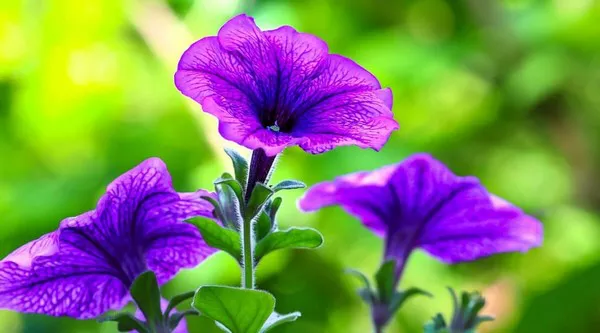In the realm of nature’s floral wonders, morning glory flowers stand as a testament to the delicate elegance and captivating charm that the botanical world has to offer. With their enchanting blooms and unique characteristics, morning glories have captured the attention of flower enthusiasts and gardeners alike. This article embarks on a journey to explore the fascinating appearance of morning glory flowers and delves into details that make these blooms a true marvel.
Revealing Nature’s Artistry: The Appearance of Morning Glory Flowers
1. A Splash of Color
The morning glory flower, scientifically known as Ipomoea spp., boasts a spectrum of colors that range from serene blues and purples to vibrant pinks, reds, and whites. The petals often feature a mesmerizing gradient, blending hues that seem to transition seamlessly from the center to the edges of the bloom. This colorful array contributes to their allure and makes morning glories a popular choice for adding vibrancy to gardens, trellises, and arbors.
2. The Bell-Like Shape
Morning glory flowers are known for their distinctive bell-like shape, which adds to their unique charm. The petals gracefully curve outward and then taper to form a slender tube, resembling a delicate bell or trumpet. This shape not only enhances their visual appeal but also makes them attractive to pollinators such as bees and butterflies, which are drawn to the nectar-rich depths of the flower.
3. Heart-Shaped Leaves
The leaves of the morning glory plant are just as captivating as its blooms. Heart-shaped and lush green, these leaves provide a stunning backdrop for the vibrant flowers. Their deep green hue contrasts beautifully with the colorful blossoms, creating an eye-catching visual display that contributes to the plant’s overall allure.
4. Fragrance and Beauty
Some morning glory species offer not only visual delight but also a delicate fragrance that adds to their allure. The combination of color, shape, and scent makes morning glories a sensory experience, inviting observers to appreciate the beauty of nature on multiple levels.
Diverse Varieties and Cultivars
1. Heavenly Blue Morning Glory
The “Heavenly Blue” variety (Ipomoea tricolor) is perhaps the most well-known among morning glories. With its vibrant blue petals and white throats, this variety stands out against lush green foliage. It is often cultivated in gardens and trellises to create stunning vertical displays.
2. Grandpa Ott’s Morning Glory
Grandpa Ott’s Morning Glory (Ipomoea purpurea) is another popular variety known for its deep purple blooms with a red star at the center. This heirloom variety evokes a sense of nostalgia and has gained a devoted following among garden enthusiasts.
3. Scarlett O’Hara Morning Glory
Scarlett O’Hara Morning Glory (Ipomoea nil) boasts fiery red petals that exude warmth and vibrancy. Its rich color and distinct appearance make it a favorite choice for adding a bold statement to garden landscapes.
4. Moonflower Morning Glory
In contrast to the vibrant daytime blooms, the Moonflower Morning Glory (Ipomoea alba) features large, white blossoms that open during the evening hours. These fragrant, luminous flowers create a serene and enchanting atmosphere in moonlit gardens.
Morning Glories Across Cultures and History
1. Symbolism in Different Cultures
Morning glories hold diverse meanings across cultures. In Chinese folklore, they symbolize unrequited love, while in Victorian floriography, they represent affection. The flowers’ ability to thrive and bloom in the early morning hours has also led them to symbolize renewal and the start of a new day.
2. Historical Significance
Morning glories have a rich history, often intertwined with ancient civilizations and cultures. They have been cultivated for centuries and have played roles in medicinal practices, religious rituals, and artistic expressions. Their role in history further adds to their mystique and allure.
Morning Glories in Art and Literature
1. Artistic Inspirations
Morning glories have inspired artists throughout history. Their delicate beauty, vibrant colors, and intricate details have made them subjects of paintings, illustrations, and other creative works that capture the essence of their allure.
2. Literary References
The enchanting beauty and fleeting nature of morning glories have found their way into literature as symbols of transience, beauty, and the passage of time. Authors have often used these flowers to convey deeper meanings and emotions within their narratives.
Conclusion
Morning glory flowers, with their captivating appearance and diverse varieties, offer a glimpse into the wonders of the natural world. From their bell-like shapes and heart-shaped leaves to their rich symbolism and cultural significance, morning glories have earned a special place in human culture and history. As gardeners and enthusiasts alike continue to appreciate their beauty and charm, these blooms serve as a reminder of the intricate and magical facets of the botanical realm—a reminder to pause, observe, and celebrate the breathtaking elegance that nature brings forth.


